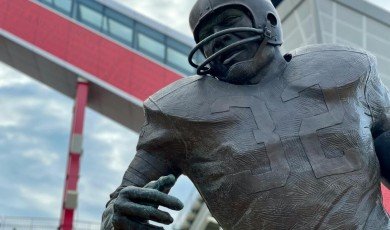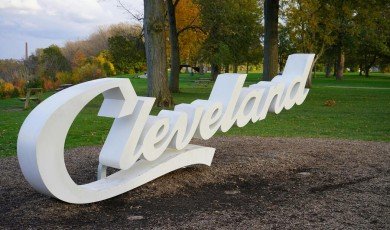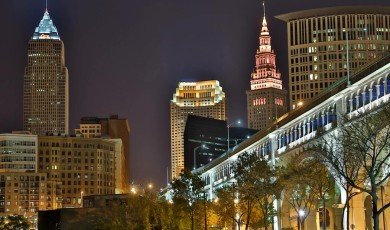
For decades, Cleveland was known as a symbol of America’s industrial decline. Once thriving on steel, manufacturing, and shipping along Lake Erie, the city struggled through job losses, depopulation, and economic stagnation during the late 20th century. The term “Rust Belt” became shorthand for decline. Yet, in recent years, Cleveland has started rewriting its story. Instead of clinging to its industrial past, the city is leaning into innovation, healthcare, technology, and culture to fuel a new identity.
Healthcare as a Global Powerhouse
One of Cleveland’s strongest engines of growth is healthcare. The Cleveland Clinic and University Hospitals have transformed the city into an international hub for medical excellence. People travel from across the globe for advanced treatment, clinical trials, and pioneering research in cardiology, oncology, and neurology. Healthcare isn’t just about patients, it’s also about jobs. The medical sector now employs tens of thousands, attracting top talent in medicine, biotechnology, and life sciences. This global reach has created opportunities for businesses that support international patients and professionals, including firms specializing in official translation services. For families traveling to Cleveland for care, clear communication in legal, medical, and administrative contexts is essential, and the demand for linguistic expertise continues to grow alongside the healthcare sector. A trend also seen in Canada, where healthcare companies rely on French Canadian translation services to make treatment accessible to diverse populations.
Technology and Innovation Districts
Beyond medicine, Cleveland is rapidly developing as a hub for technology and startups. Districts like Midtown Tech and the Health-Tech Corridor are attracting entrepreneurs and innovators. Startups in fintech, clean energy, and AI are choosing Cleveland for its affordability, skilled workforce, and strong network of research institutions. Case Western Reserve University, with its cutting-edge engineering and computer science programs, feeds directly into this pipeline of innovation. Biotech in particular is emerging as a strong area of growth. For companies in this sector, compliance with international regulations is essential and French legal translation services are often critical to ensuring documents, research, and approvals are legally sound across borders. Cleveland’s growing biotech scene benefits directly from this global-facing expertise. something new.
Culture as an Economic Driver
Cleveland’s culture is also central to its reinvention. The city is home to world-class cultural institutions: the Rock & Roll Hall of Fame, the Cleveland Orchestra, and the Cleveland Museum of Art all attract millions of visitors annually. Neighborhoods like Tremont, Ohio City, and Gordon Square showcase a thriving arts and food scene, blending historic charm with modern creativity. The food culture, once dominated by hearty Eastern European staples, has expanded into a diverse culinary scene with award-winning restaurants, craft breweries, and global flavors. This culinary renaissance parallels the city’s broader transformation, fresh, creative, and rooted in tradition yet eager to innovate.
Sports and Community Identity
No account of Cleveland would be complete without sports. The Cavaliers, Browns, and Guardians are more than just teams; they are symbols of resilience and community pride. Championship runs, heartbreaking losses, and loyal fanbases have forged a unique spirit that unites people across backgrounds. This identity of grit and loyalty mirrors the city’s journey itself, a willingness to keep fighting, rebuilding, and believing in the future.
Challenges Along the Way
Of course, Cleveland’s renaissance hasn’t been without hurdles. Population decline continues, and issues such as poverty, inequality, and infrastructure renewal remain pressing. But unlike the pessimism of past decades, today’s challenges are met with a sense of possibility. Leaders in government, business, and community organizations are working together on strategies for sustainable growth, equity, and inclusion.
A Global Gateway
One of the most exciting aspects of Cleveland’s comeback is its increasingly international role. From healthcare to global business, the city is drawing attention far beyond the United States. International collaborations in medicine, partnerships with foreign companies, and the arrival of immigrants bringing new skills and perspectives are giving Cleveland a more cosmopolitan identity than it has ever had before. As Cleveland continues to welcome people from different nations, services such as official translation services will remain critical. Whether it’s helping researchers collaborate across borders, enabling patients to understand complex treatments, or supporting businesses with international contracts, these services form an invisible but essential part of the city’s global integration. Similar needs are evident in global media, where news outlets use French legal translation to navigate cross-border regulations, a reminder that language services are central to global credibility.
Looking Ahead
Cleveland’s journey is far from over, but its direction is clear. What was once a city known for decline is now being recognized for innovation, culture, and resilience. By leaning into its strengths, world-class healthcare, thriving startups, rich cultural institutions, and a spirit of perseverance, Cleveland is proving that reinvention is possible. The city’s comeback is not about erasing its past but about building on its foundation. The steel mills and shipping yards may no longer define Cleveland, but the grit, determination, and ingenuity forged there remain at the heart of its future. Today, Cleveland stands as a powerful example of how communities can rise again, transforming challenges into opportunities and reclaiming their place on the global stage.
Most Read
Featured Posts

La scène culinaire surprenante de Cleveland






